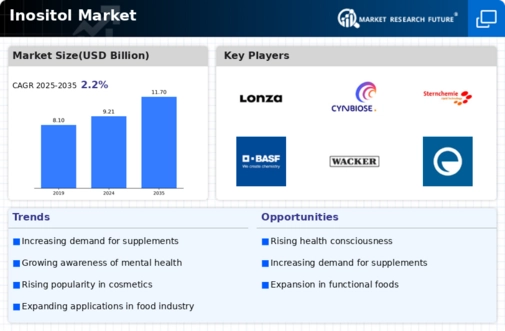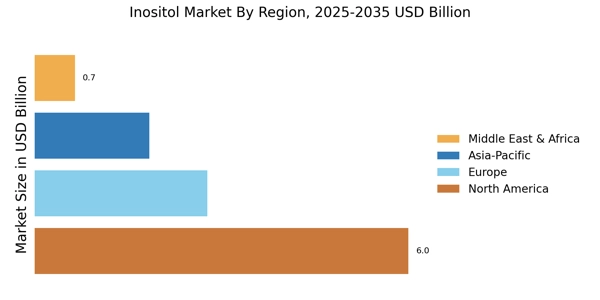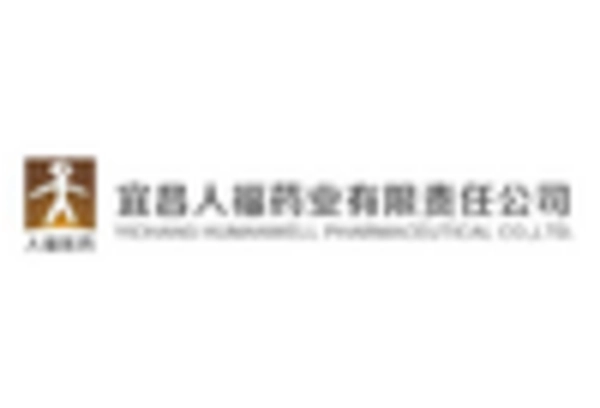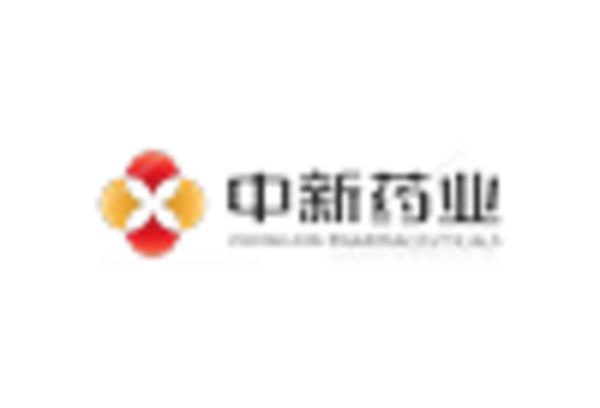Expansion of Nutraceuticals Sector
The Inositol Market is benefiting from the rapid expansion of the nutraceuticals sector, which encompasses products that combine nutrition and pharmaceuticals. Inositol Market is increasingly recognized as a valuable ingredient in this sector, particularly for its potential therapeutic effects. The nutraceuticals market has shown robust growth, driven by rising consumer interest in preventive healthcare and wellness. As individuals become more proactive about their health, the demand for inositol-based nutraceuticals is expected to increase. This trend suggests that the Inositol Market will continue to thrive, as manufacturers innovate and develop new formulations that leverage the health-promoting properties of inositol.
Rising Popularity of Functional Foods
The Inositol Market is witnessing a significant shift towards functional foods, which are designed to provide health benefits beyond basic nutrition. Inositol Market is often incorporated into various food products, including beverages and snacks, appealing to health-conscious consumers. The Inositol Market has been projected to grow substantially, with inositol-containing products gaining traction due to their perceived health advantages. This trend is further fueled by the increasing prevalence of lifestyle-related health issues, prompting consumers to seek out foods that can enhance their well-being. As a result, the integration of inositol into functional foods is likely to bolster the Inositol Market, catering to a diverse range of dietary preferences.
Increasing Awareness of Health Benefits
The Inositol Market is experiencing a notable surge in consumer awareness regarding the health benefits associated with inositol. This sugar alcohol is recognized for its potential role in improving mental health, particularly in conditions such as anxiety and depression. As more individuals seek natural alternatives to pharmaceuticals, the demand for inositol supplements is likely to rise. Recent studies indicate that inositol may help regulate mood and support cognitive function, which aligns with the growing trend of prioritizing mental well-being. Consequently, this heightened awareness is driving growth within the Inositol Market, as consumers increasingly turn to dietary supplements that promote overall health.
Growing Interest in Mental Health Supplements
The Inositol Market is experiencing a surge in interest surrounding mental health supplements, as consumers become more aware of the importance of mental well-being. Inositol Market has been studied for its potential benefits in managing anxiety and mood disorders, making it an appealing option for those seeking natural solutions. The mental health supplement market has been expanding, with a growing number of individuals turning to dietary supplements to support their mental health. This trend indicates that the Inositol Market is likely to see increased demand, as consumers prioritize mental wellness and seek out effective, natural alternatives.
Technological Advancements in Supplement Production
The Inositol Market is poised for growth due to technological advancements in supplement production. Innovations in extraction and formulation techniques have enhanced the quality and bioavailability of inositol supplements, making them more appealing to consumers. As manufacturers adopt cutting-edge technologies, the efficiency of production processes improves, potentially lowering costs and increasing accessibility. This evolution in production capabilities is likely to stimulate competition within the Inositol Market, as companies strive to offer superior products. Furthermore, advancements in research and development may lead to new applications for inositol, further expanding its market potential.


















Leave a Comment